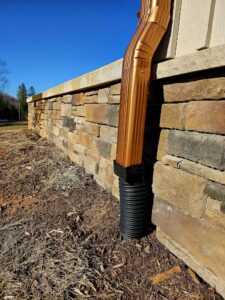Protecting your home’s foundation
Published 12:09 pm Tuesday, February 11, 2025
|
Getting your Trinity Audio player ready...
|
While the 2025 real estate trends are complicated and difficult to decipher, two factors remain constant: people still want to sell their existing homes and purchase something new. The question is when. Since the market’s road to recovery may still be far off, time can work in your favor as you take the opportunity to review your home’s condition and make vital improvements.
One such improvement is evaluating and fixing any water-related problems in and around your home’s foundation. While many homeowners focus on clearing leaves and dirt from their gutters—often risking their safety on ladders—or consider installing gutter systems designed to keep debris like leaves, pine needles, and fir needles out, they may overlook a critical question: how effectively are the gutters, downspouts, and drainage systems channeling water away from the home?
Even if water is efficiently directed off your roof, it’s important to ensure that your downspouts and drainage conduits are clear of debris and properly positioned. You should also verify where the water is being deposited. If the drainage conduit is blocked, misdirected, or simply absent, you could be channeling water directly to the base of your foundation or underneath your home.
Trending
Signs of water seepage at the base of your foundation or through cinder blocks can include various visual characteristics. The blocks may appear darker in color as they absorb moisture. A white, powdery residue known as efflorescence can form on the surface when water evaporates and leaves behind salts dissolved from the concrete or soil. Over time, the blocks may begin to flake or crumble due to spalling, caused by the pressure of trapped water expanding and contracting as it freezes and thaws. Brown or rust-colored streaks may also appear if iron or other minerals are present in the water.
Efflorescence is the chemical reaction responsible for the white residue. It occurs when water carries soluble salts from the concrete, mortar, or soil to the surface. As the water evaporates, the salts remain, forming a visible crystalline deposit.
If you are considering selling your home or examining a property you might purchase, take a close look at the slope of the terrain on all sides of the home and how water naturally flows toward or around the foundation. Ideally, the land around the foundation should slope downward and away from the home, not directly against it.
During a home inspection, it is common for sellers to be required to remediate any potential water pooling or even mild seepage through the foundation. While these types of repairs can be costly, it is far better to address such problems well before placing your home on the market.

Ensure that gutter water is properly directed into a clear and functional drainage conduit to protect your foundation. (Photo by Kirk Gollwitzer)






